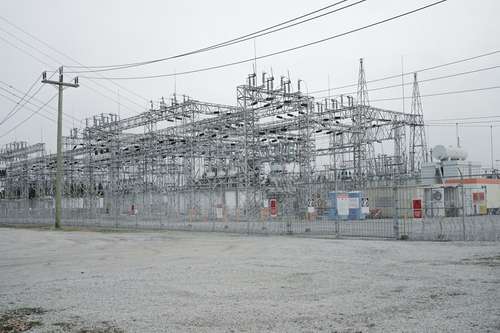With the introduction of Wi-Fi 7, also known as 802.11be, the Wi-Fi Alliance has ushered in a new era of connectivity, promising unparalleled Wi-Fi 7 speeds reaching nearly 5.8 gigabits per second (Gbps) in homes and offices.
While some may find it challenging to believe Intel's claims of achieving a maximum data rate of 5.8 Gbps for a typical Wi-Fi 7 laptop, real-world speeds could potentially reach up to 4 Gbps, making it more than adequate for the majority of users, excluding those operating high-performance supercomputer clusters.
What sets Wi-Fi 7 apart from its predecessor, Wi-Fi 6E, which can attain speeds up to 1.5 GB/s? The answer lies in the incorporation of several innovative features, including:
Increased Channel Bandwidth
Wi-Fi 7 elevates the maximum channel bandwidth from 160MHz to 320MHz, facilitating faster data transmission and unprecedented Wi-Fi 7 speeds.
The expanded bandwidth allows more data to be packed into the signal, enhancing wireless download speeds.
4K Quadrature Amplitude Modulation (QAM)
This cutting-edge feature permits each signal to carry up to 120% more data within a channel compared to Wi-Fi 6E.
Multi-Link Operation (MLO)
By leveraging two or three bands (2.4GHz, 5GHz, and 6GHz), MLO effectively distributes connections across devices, enhancing speed and stability. Seamlessly switching between bands ensures uninterrupted connectivity and contributes to overall speed.
Improved Latency
Integrating all three bands reduces airtime restrictions, accelerates the transmission of data packets, and offers significant benefits for low-latency applications such as online gaming and video conferencing.
Advancement of MU-MIMO
Wi-Fi 7 introduces additional support for multi-user and multiple-input, multiple-output (MU-MIMO) spatial streams, allowing routers to communicate simultaneously with multiple devices, enhancing network efficiency, especially in high-density environments.
Multi-Resource Units (RU)
Unlike previous Wi-Fi standards, where the entire channel would be unavailable if part of the high-speed channel were in use, Wi-Fi 7 allows for shared channel usage when space is available.
Wi-Fi 7 functions on the traditional 2.4GHz, 5GHz, and 6GHz bands, ensuring compatibility with preceding Wi-Fi standards.
However, the most immediate advantage of Wi-Fi 7 is its speed capabilities.
According to Intel, a typical Wi-Fi 7 laptop could potentially reach 5.8 GB/s, although even half of that would be impressive for most users.
The primary factor contributing to the increased speed is channel bandwidth or the width of the pipeline for data transmission.

Wi-Fi 7 doubles the maximum channel bandwidth to 320MHz, compared to 160MHz on Wi-Fi 5, 6, and 6E routers. This means a more extensive pipeline for more data, although this is only possible on the 6GHz band as the 5GHz band does not have enough space.
However, older devices connected to Wi-Fi 7 networks may not experience the enhanced performance or new features.
Upgrading to devices supporting Wi-Fi 7 can unlock the standard's full potential, offering significant connectivity improvements.
By boosting the number of supported MU-MIMO streams to 8x8, Wi-Fi 7 can simultaneously communicate with up to 16 devices, enhancing network capacity.
This advantage also benefits older devices, provided the router is equipped with the necessary antennas.
While the decision to invest in a Wi-Fi 7 router may require consideration, the future benefits of enhanced connectivity justify the upgrade.
With the added features of MLO and OFDMA in Wi-Fi 7, users may experience less lag on their network.
The new technology allows for simultaneous connections on multiple bands and sophisticated signal modulation, potentially reducing the wait times for processing requests on the network.
While some Wi-Fi 7 routers are already available on the market, purchasing one is not recommended now. This is because the standard has not yet been officially finalized, and only a limited number of devices can support it.
However, the chips for Wi-Fi 7 are already being produced. Qualcomm has released their FastConnect 7800 mobile wireless chipset, which is already used in some devices, such as the Samsung Galaxy S23 Ultra.
However, for these devices to fully support Wi-Fi 7, Samsung must enable the feature on their phones.
In conclusion, Wi-Fi 7 represents a monumental leap forward in wireless connectivity, surpassing the capabilities of its predecessors with superior speeds, low latency, and advanced features.
As technology continues to evolve, embracing Wi-Fi 7 promises to revolutionize how we experience and interact with the digital world, setting new standards for wireless communication.




